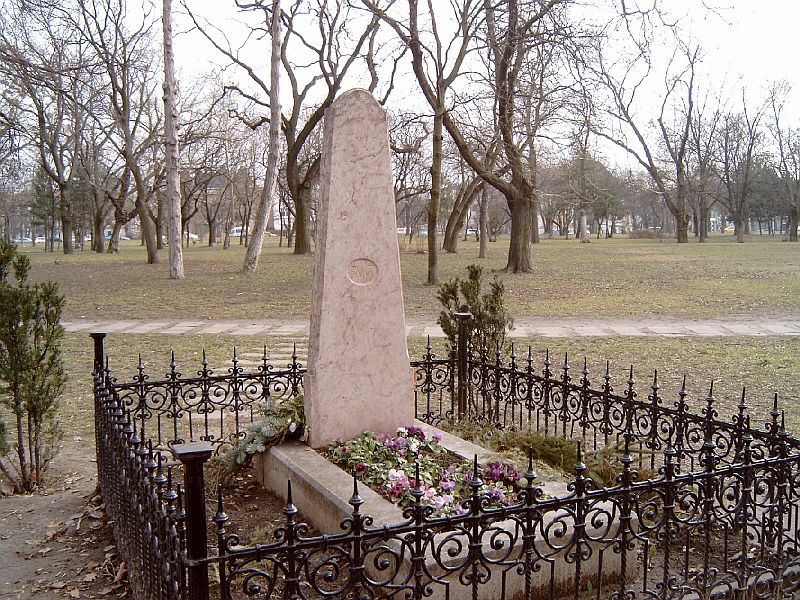The mysterious tombstone in Budapest’s City Park: Who was buried beneath the word ‘FUIT’?

Between the ‘Reading Women’ statue and the Transport Museum in Budapest’s City Park lies a tombstone with a single word: FUIT. But who was laid to rest there, and what does the inscription mean?
For decades, rumours swirled about the grave’s origin. Some believed it was the final resting place of a suicide victim. Others speculated it belonged to a donor who gifted part of the park to the city, a disillusioned poet, or a Hungarian noble whose romance with a young countess ended in heartbreak.
A tomb with only “FUIT” written on it: Whose is it?
In the 1950s, several stories circulated about the grave’s mysterious occupant, according to BudAPPest. One theory claimed the tomb held the remains of a tormented poet; another suggested it marked a tragic love story between a nobleman and a countess. But like many myths, these tales were far from the truth.
Archival research revealed that the man buried beneath the stone was Jakab Horváth, a lawyer who died in 1806. In his will, he donated 700 forints to the city of Pest with the requirement that he be buried in what was then known as “Ökördűlő” or “Battyány Forest”—now City Park—and that his tombstone bear only the word “Fuit.” The burial site was bricked in by Zitterbach Mátyás, and the tombstone was crafted by János Okenfusz.

The eccentric life of Jakab Horváth
Born in 1738 in the village of Toporcz, Horváth became a successful attorney. Yet despite his achievements, he shunned earthly pleasures—he never married, spent most of his time in his library, showed little religious interest, and led an austere life. He was, however, a Jacobin who defended the accused in the famed Martinovics conspiracy trial. Horváth worked as the estate manager for Prince Grassalkovich and was described by contemporaries as a “philosophical, somewhat eccentric but respected citizen of Pest,” according to Dívány.
Upon his death, he left all his wealth to charity, with a single request to the city council of Pest: to be buried in a quiet garden under a humble or philosophical tombstone inscribed with “Fuit.” A plot was chosen near today’s Hermina Chapel in Zugló: at the time, a secluded, marshy area fitting his final wish.
What does “FUIT” mean?
The tombstone bears no name or date—just four letters: FUIT. While it could be mistaken for an acronym, it’s actually a Latin word meaning “was” or “has been.”

Cultural significance of the tomb
Horváth’s resting place was restored in 1955 after a local civic group, the Herminamező Civil Circle, launched efforts to preserve it. According to Köztérkép, stone mason Sándor Antal volunteered to renovate the tombstone. Led by researcher Péter Buza, a long investigative effort began to determine the grave’s exact location, which earlier records had failed to identify. Using modern tools, the grave was finally rediscovered on August 30, 1995.
For years, park caretakers did not even realise a crypt lay beneath the stone. But in 1955, while planting shrubs, workers accidentally uncovered the burial chamber and saw the decaying coffin peeking through the surface. The deceased was found in a double-layered coffin dressed in period clothing.
The Herminamező Civil Circle had the crypt restored, commissioned a new replica of the damaged stone, and the city’s gardening company fenced off the site for protection. Ever since, it has become a tradition for local civic groups—including the Budapest City Protection Association, Herminamező Civil Circle, and the Liget Republic—to open the annual park season on Easter Sunday with a commemorative wreath-laying ceremony.
The life and legacy of Jakab Horváth, as well as the story of his grave, are even mentioned by poet János Arany in his work “Song of the Pest Park.” Arany often travelled to City Park with statesman Ferenc Deák by omnibus, and his 1877 poem gives a vivid portrayal of the park’s atmosphere. In the closing lines, he even references the mysterious tombstone.
Read more history-related news on Daily News Hungary!
Read also:
- Is it a misconception that Hungarians did not eat horse meat? Here’s what archaeologists say
- Did historians just find the tomb of Dracula?
To read or share this article in Hungarian, click here: Helló Magyar







